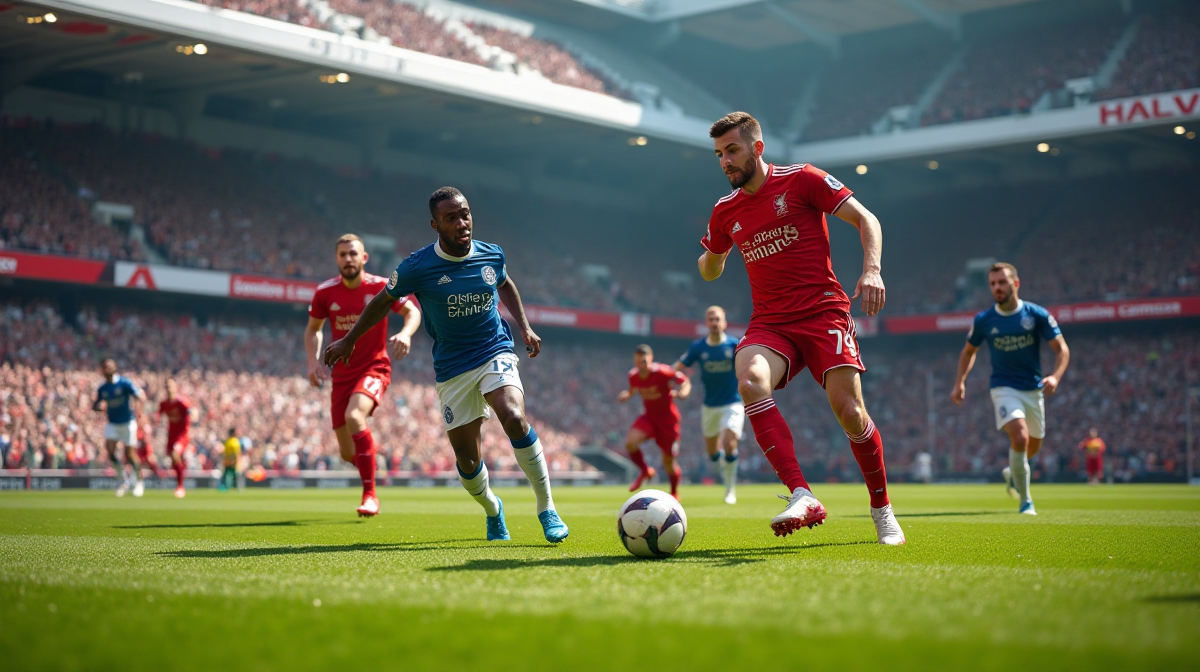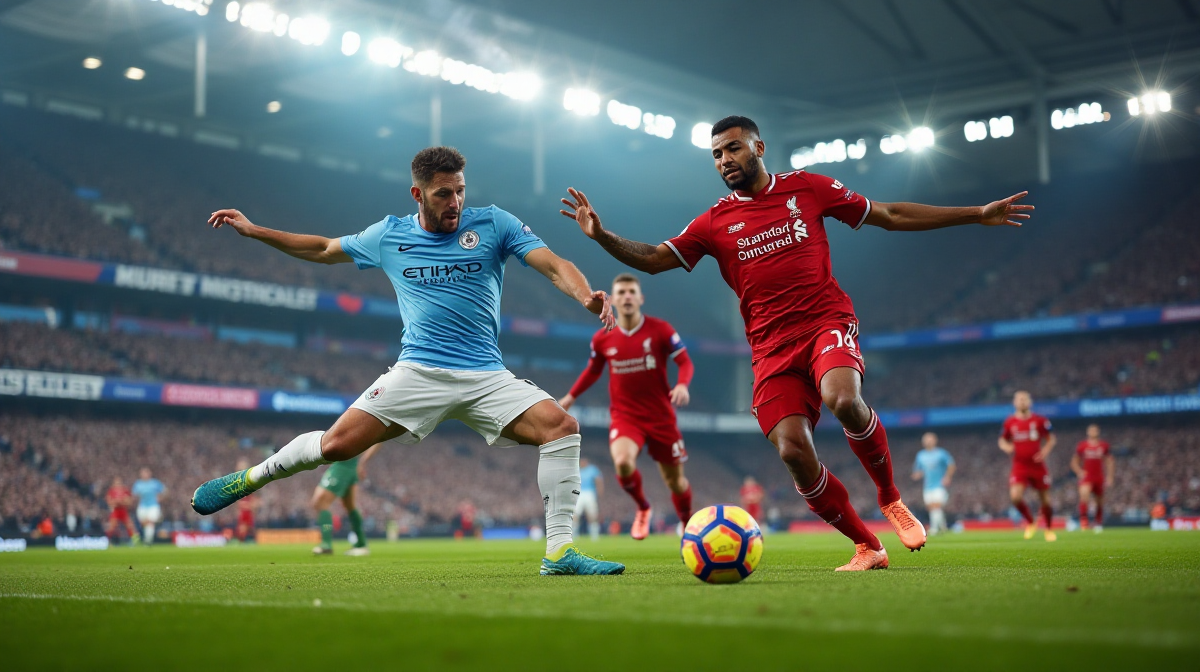Who is the Highest Paid Premier League Player Now?
Introduction: The Premier League's Financial Giants
The English Premier League is renowned globally not just for its thrilling football, but also for its immense financial power. This financial strength directly translates into the salaries commanded by its star players, making it a topic of constant discussion among fans and pundits alike. A quick trip to a bet9ja shop often sparks conversations about player performance, and, naturally, their earnings.
A Brief Overview of Premier League Player Salaries
Player salaries in the Premier League have skyrocketed over the decades, driven by lucrative television deals and the influx of foreign investment. The league consistently ranks as one of the wealthiest sports leagues in the world, allowing clubs to offer increasingly attractive wage packages.
Why is Knowing Highest Paid Players a Popular Topic?
The fascination with the highest-paid players is multifaceted. For fans, it’s a source of intrigue and debate – is a player worth their salary? For those looking to book a bet bet9ja shop, understanding a player’s value and motivation can be part of their analysis. Transfer speculation is also heavily influenced by wage expectations, fueling constant media coverage.
Scope of this Article – Focusing on Current Highest Earners
This article dives into the current landscape of Premier League salaries, focusing on the 2023/2024 season. We’ll break down the top earners, explore the factors influencing these figures, and look ahead to future trends. And while discussing finances, it's a reminder to utilize secure payment methods, even when using options like bet9ja shop old mobile transfer.
The Current Top Earners – A Detailed Breakdown
#1: Erling Haaland
Topping the list is Erling Haaland of Manchester City. His reported weekly wage exceeds £865,000, making him the highest-paid player in the Premier League. This astonishing figure is justified by his incredible goal-scoring record, which has been instrumental in City's success, including their pursuit of the premier league trophy.
#2: Kevin De Bruyne
Following closely is Kevin De Bruyne, also of Manchester City, earning around £400,000 per week. De Bruyne is the engine of City’s midfield, dictating play and providing crucial assists. His consistency and playmaking abilities are invaluable to the team.
#3: Mohamed Salah
Mohamed Salah of Liverpool commands a weekly wage of approximately £350,000. His consistent goal-scoring record and electrifying performances have made him a fan favorite and a key component of Liverpool’s attack.
#4: Casemiro
Casemiro, the defensive midfielder for Manchester United, earns around £350,000 per week. His arrival has significantly strengthened United’s midfield, providing much-needed steel and experience.
#5: Raheem Sterling
Raheem Sterling, despite some fluctuating form, earns a substantial £325,000 per week at Chelsea. His pace and direct running still pose a threat to opposing defenses, and his commercial appeal contributes to his high earnings.
Additional High Earners
Other players consistently featuring among the highest earners include Nkunku (Chelsea), Saka (Arsenal), and Odegaard (Arsenal), all commanding significant weekly wages reflecting their importance to their respective clubs.

Factors Influencing Premier League Salaries
Club Revenue & Financial Fair Play Regulations
The revenue generated by Premier League clubs – primarily from television rights and commercial deals – is the primary driver of player salaries. However, clubs must adhere to Financial Fair Play (FFP) regulations, which aim to prevent clubs from spending beyond their means.
Player Performance & Market Value
A player’s performance on the pitch directly impacts their market value and, consequently, their earning potential. Players who consistently deliver exceptional performances and contribute to team success are in high demand and can command higher wages.
Player Status & Brand Recognition
Players with significant brand recognition and a large social media following can attract lucrative endorsement deals, supplementing their club salaries. This is particularly true for global superstars.
Position & Scarcity of Skillset
Certain positions, such as top-quality goalkeepers and prolific goalscorers, are in high demand and command premium wages due to the scarcity of players with the required skillset.
Length & Structure of Contracts
The length of a contract, signing-on bonuses, and image rights all play a role in determining a player’s overall earnings. Long-term contracts often include substantial signing-on fees and performance-based bonuses.

Historical Perspective: How Premier League Salaries Have Evolved
Comparing Salaries from the 1990s/2000s to Today
Comparing salaries from the 1990s and 2000s to today reveals a dramatic increase. In the 1990s, a top Premier League player might earn £20,000 - £30,000 per week. Today, that figure is dwarfed by the salaries of even mid-table players.
The Influence of TV Rights Deals on Player Wages
The explosion in Premier League television rights deals has been the single biggest driver of salary inflation. As broadcasting revenue increased, clubs were able to allocate more funds to player wages.
Impact of Foreign Ownership and Investment
The influx of foreign ownership and investment in Premier League clubs has also contributed to rising salaries. New owners often have deeper pockets and are willing to invest heavily in attracting top talent.
Future Trends in Premier League Player Compensation
The Potential Impact of Salary Caps & Financial Regulations
There is ongoing debate about the potential introduction of salary caps or stricter financial regulations. These measures could curb salary inflation and promote greater financial sustainability.
Rising Player Power & Agent Influence
Players and their agents are becoming increasingly influential in contract negotiations, leveraging their market value and negotiating power to secure ever-higher wages.
The Growing Competition from Other Leagues
The emergence of financially powerful leagues, such as the Saudi Pro League, is creating competition for Premier League players. This increased competition could drive up wages as clubs seek to retain their star assets.
Potential for Innovative Contract Structures
We may see more innovative contract structures, such as performance-based bonuses and profit-sharing agreements, becoming more common.
Resources & Where to Find Reliable Salary Information
Reputable Sports News Outlets
Reliable salary information can be found on reputable sports news outlets such as ESPN, Sky Sports, and BBC Sport.
Football Finance Websites
Websites dedicated to football finance, such as Spotrac and Capology, provide detailed salary data and contract information.
Considerations Regarding Accuracy – Estimates vs. Confirmed Figures
It’s important to note that much of the salary information available is based on estimates and reports. Confirmed figures are often confidential and may not be publicly available.
Conclusion: The Continuing Inflation of Premier League Wages
Recapping the Current Highest Earners
Currently, Erling Haaland leads the Premier League’s highest earners, followed by Kevin De Bruyne, Mohamed Salah, Casemiro, and Raheem Sterling. These players represent the pinnacle of footballing talent and command salaries that reflect their immense value. Even a quick visit to a bet9ja shop will confirm their impact on the game.
The Broader Implications for the Future of Football
The continuing inflation of Premier League wages has broader implications for the future of football. It raises questions about financial sustainability, competitive balance, and the accessibility of the game for fans. The increasing gap between the wealthiest clubs and the rest could further exacerbate these issues. It’s a landscape where even placing a bet at a bet9ja shop feels connected to the immense financial power driving the sport.

